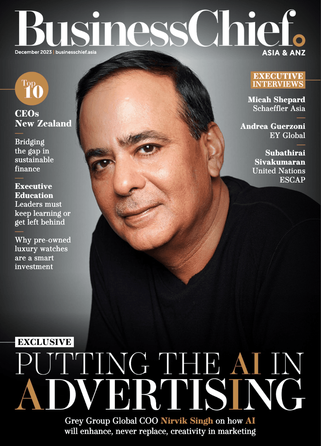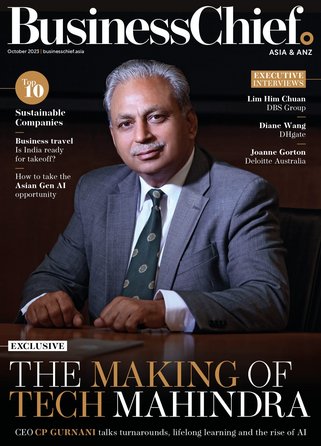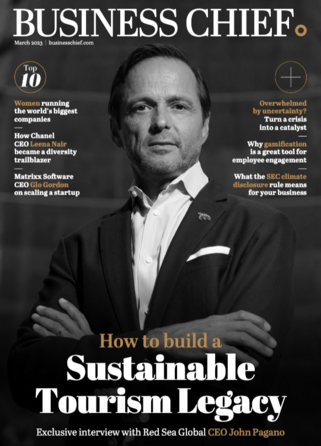Opinion: Successfully managing large IT environments

The Australian enterprise infrastructure market is set to grow 11.3% in 2021 due to hybrid cloud adoption and infrastructure modernisation trends, according to new research from analyst firm, IDC. They say that 2020 was undoubtedly a year in which business disruptions accelerated enterprise IT infrastructure transformations in response to the unprecedented market dynamics.
Large IT environments include thousands of connected devices, systems and applications across multiple locations, so Australian-based enterprises need an easy way to gain visibility and control of their increasingly complex, hybrid or legacy infrastructures.
Successfully managing these large IT environments requires information about performance, availability and usage. The increase in the pace of code changes, testing, deployment and monitoring means that IT teams have to balance a lot of goals, constraints and tradeoffs.
To gain complete visibility of large IT environments, enterprises will often have a multitude of monitoring and analysis tools, generating in-depth information about every IT component. Having many point solutions makes the monitoring task a significant challenge to ensure that they can keep an eye on everything simultaneously. This wastes time and creates data silos that can lead to human error.
Centralising their monitoring platform, so that IT teams are instantly informed when issues occur in their IT infrastructure allows them to take appropriate and immediate action to mitigate any risks. Viewing the entire infrastructure through an integrated, single dashboard allows for a clear line of sight across an entire system and removes any blind spots.
By taking steps to create full real-time visibility across their entire technology stacks, large Australian companies can create a culture of observability across their infrastructure, networks, virtual environments, storage, applications, cloud and hardware. Gaining observability in near real-time will reduce a company’s time to resolution and will result in a much improved end-user experience.
Loosely coupled systems
Large enterprises often deploy thousands of applications to support and enable their business. Many of the core applications are large, monolithic systems featuring layers of dependencies and workarounds in established companies.
In these large IT environments, quarterly release schedules can create 24-month backlogs of updates and fixes. Making even minor changes to these core systems may require months of regression testing, adding to the already massive workload for IT teams.
Over the last few years, we have seen an entirely different approach to IT infrastructure design in which core components are no longer interdependent and monolithic but are “loosely coupled.”
Transforming a legacy architecture
Large enterprises can no longer afford to ignore the impact that complexity, lack of flexibility and inadequate scalability have on their bottom lines. By transforming their legacy architecture into one that emphasises cloud-first, containers, virtualised platforms and reusability, they may be able to move broadly from managing instances to managing outcomes.
The inevitable architecture
For many established companies, the move to an inevitable architecture represents the next phase in a familiar modernisation journey that began when they moved from mainframe to client-server and then to a web-centric architecture. The inevitable architecture, that has been adopted by many modern enterprises, is a cloud-based, distributed, elastic, standardised technology stack built for reliability, scalability and speed.
None of these technology transformations over the past two decades were easy, often taking months or even years to complete, but the outcome would usually justify the effort. It is already becoming clear that, taken together, a flexible architecture represents a fundamental shift across the IT enablement layer, that can deliver immediate efficiency gains while simultaneously laying a foundation for agility, innovation and growth.
Risk capabilities and profiles
There are many questions and challenges that CIOs need to address as they and their IT teams build more flexible and efficient architecture. For example, they may have to create additional processes to accommodate new risk capabilities that their organisations have not previously deployed.
Implementing new platforms often comes with risk and security capabilities that can be deployed, customised and integrated with existing solutions and business processes. While enterprises should take advantage of these capabilities, their existence does not mean they can ignore their risk considerations. Risk profiles vary, sometimes dramatically, by organisation and industry. Factory-embedded risk capabilities may not address the full spectrum of risks that an organisation faces.
Overcoming the enterprise monitoring challenge
So, it seems clear that having multiple methods to monitor everything in the IT environment is essential for a large organisation. The challenge for enterprises is to successfully monitor tens of thousands of elements in real-time and to ensure that they are performing well. This results in quicker response times, improved computing processes and satisfied employees and customers. Ultimately this will provide better performance through a high level of observability, intelligence and automation.
The obvious solution is to provide centralised IT infrastructure monitoring to gather data from many disparate sources and to avoid IT teams drowning in a flood of overwhelming information. Creating visibility across the entire tech stack is about empowering teams to work smarter, not harder while ensuring that the business objectives are met.
- How to make DBS – the world’s best bank – even betterLeadership & Strategy
- Using configuration management tools to break down siloesTechnology
- Banking top industry, Google top employer – Singapore talentLeadership & Strategy
- Understanding the Five Layers of Digital TransformationDigital Strategy



